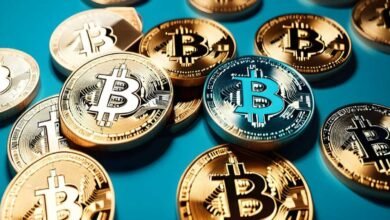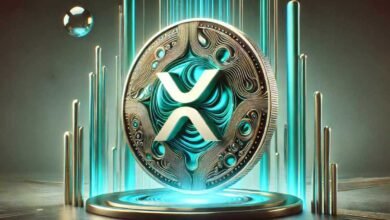
Ripple’s February 1, 2025, XRP Unlocking: Implications for the Crypto Market
On February 1, 2025, Ripple unlocked a significant amount of XRP from its escrow accounts, prompting renewed discussions about the company’s influence on the cryptocurrency ecosystem. The release of approximately 1 billion XRP tokens, valued at $3.10 billion at the current market price, has once again placed Ripple under the microscope. As one of the largest players in the crypto space, Ripple’s actions have far-reaching implications, both within the XRP ecosystem and across the broader digital asset market.
The unlocking event of these tokens was conducted in three separate transactions: 430 million XRP, 300 million XRP, and 200 million XRP, totaling 930 million XRP. The remaining 70 million XRP was transferred from previously unknown wallets, which added an element of mystery and speculation about the intentions behind these movements. This event is a regular part of Ripple’s operational model, but it brings to light both the opportunities and challenges that come with Ripple’s control over such a large portion of the XRP supply.
The Mechanics of XRP Unlocking: Ripple’s Escrow Strategy
Ripple’s decision to lock up a large portion of its total XRP supply in escrow accounts is an integral part of its strategy to control the distribution of the cryptocurrency. The primary objective of this mechanism is to ensure a steady and predictable release of tokens over time. Ripple holds approximately 38 billion XRP in escrow, with around 4.5 billion of those tokens available for sale or other purposes. The monthly unlocking events are designed to manage these tokens without flooding the market or overwhelming demand, allowing Ripple to sell portions of the unlocked tokens for operational purposes.
This release mechanism has been in place for several years, and Ripple has consistently unlocked tokens on a monthly basis. In February 2025, the unlocking amounted to 1 billion XRP, representing a significant portion of Ripple’s total monthly token releases. While the actual unlocked amount varies, the regularity of these releases has been a hallmark of Ripple’s strategy and has become a focal point for discussions on the centralization of the XRP supply. By releasing tokens in this structured manner, Ripple aims to strike a balance between liquidity and stability in the XRP market.
The February 1, 2025 Unlocking: Breaking Down the Transactions
The February 1 release of 1 billion XRP was divided into three separate transactions: 430 million XRP, 300 million XRP, and 200 million XRP. These amounts reflect Ripple’s approach to managing its supply and ensuring that large releases do not disrupt the market too significantly. The smaller transaction of 70 million XRP that was transferred from previously unknown wallets raised additional questions.
This 70 million XRP could be linked to various potential uses, such as institutional sales, partnerships, or other operational needs that Ripple has not disclosed publicly. The fact that these transactions originated from wallets not immediately identified with Ripple adds a layer of intrigue to the event. Speculation abounds within the crypto community about the nature of these transfers, with some suggesting that Ripple might be working with third parties or using the tokens for private agreements.
However, Ripple’s rationale behind unlocking and distributing these tokens remains largely transparent, and the monthly release of XRP from its escrow accounts is considered routine. Still, with XRP’s growing popularity and market price, every release is closely scrutinized by market participants, investors, and analysts alike.
Market Reaction: XRP’s Price Surge and Its Implications
One of the most noticeable effects of the February 1 release was the dramatic rise in XRP’s price. As of the unlock date, XRP was trading at $3.10 per token, reflecting a 45.44% increase over the previous month. This price surge is indicative of growing market demand for XRP, which has seen significant gains recently. The release of 1 billion tokens into circulation, which is equivalent to roughly $3.10 billion in value, would typically be expected to dampen market prices due to an increase in supply. However, the opposite occurred—XRP saw its price surge.
This price surge is a result of several factors. First, the unlocking event signals to the market that Ripple is continuing its operations as planned, and investors may interpret this as a sign of stability and confidence in the company. Additionally, XRP’s price increase may also be driven by growing institutional interest in the cryptocurrency, as well as the overall bullish sentiment in the broader crypto market. Despite the unlocking of a large volume of tokens, the market was able to absorb this influx, which suggests that demand for XRP is outpacing the supply being introduced into the market.
However, the surge also raises important questions about the role Ripple plays in influencing the price dynamics of XRP. Critics argue that the company’s ability to release such large amounts of tokens could lead to market manipulation or at least create volatility in the price. The centralized nature of XRP’s supply, with Ripple holding such a significant portion of the circulating tokens, raises concerns about whether the market truly reflects organic demand or if Ripple’s decisions are shaping the price to a significant degree.
Concerns Over Centralization: Is Ripple Unduly Influencing XRP’s Market?
Ripple’s control over the vast majority of XRP has led to ongoing debates about the centralization of the cryptocurrency. While Ripple has made efforts to ensure transparency in the release of XRP from its escrow accounts, the fact remains that the company holds an overwhelming share of the token’s total supply. This has sparked concerns about the degree of centralization in the XRP ecosystem, particularly given Ripple’s role in managing the release of tokens and its substantial holdings.
Centralization in the cryptocurrency space is a contentious issue, as many in the community advocate for the decentralized nature of blockchain networks and digital assets. The idea behind decentralized cryptocurrencies like Bitcoin and Ethereum is that no single entity or group controls the supply or price of the tokens. However, XRP’s structure is different. Ripple’s centralization of the XRP supply means that the company has significant control over the currency’s market behavior. As a result, Ripple’s decisions regarding the release of tokens can have a substantial impact on the price and market dynamics of XRP.
Critics argue that this centralized control gives Ripple an unfair advantage in the market and raises concerns about the potential for market manipulation. If Ripple were to decide to flood the market with tokens, for example, it could cause the price of XRP to crash. Conversely, by limiting the supply, Ripple could artificially inflate the price of XRP. These concerns have led some to question whether XRP can truly be considered a decentralized asset, given the significant influence Ripple has over its supply.
The Role of Ripple Executives: Conflicts of Interest and Financial Incentives
Another aspect of the ongoing debate around Ripple’s influence on XRP involves the financial interests of the company’s executives. As holders of large amounts of XRP, Ripple’s leadership stands to benefit significantly from the price appreciation of the token. This has led some to question whether the company’s decisions regarding the release of tokens are driven by a desire to maximize profits for its executives, even if it causes short-term volatility in the market.
Ripple executives, including CEO Brad Garlinghouse and co-founder Chris Larsen, are known to have substantial holdings of XRP. These holdings mean that they can personally profit from retail sales of the token. While Ripple has consistently maintained that its release strategy is intended to ensure the long-term success of XRP, the financial incentives for executives cannot be ignored. As the price of XRP rises, Ripple’s executives stand to benefit, which creates a potential conflict of interest.
The concern is that Ripple’s leadership could time the release of tokens in a way that maximizes their personal financial gains, even if it results in price volatility or short-term disruption in the market. This has led to calls for greater transparency and oversight in Ripple’s operations, with some arguing that the company’s leadership should be held accountable for its role in shaping XRP’s price and market behavior.
Escrow Transparency and the Debate on Decentralization
Ripple has consistently defended its decision to lock up the vast majority of XRP in escrow as a way to provide transparency and stability to the market. The escrow accounts are designed to release tokens in a predictable manner, ensuring that the market is not flooded with tokens all at once. The company has also made efforts to disclose its unlocking schedule and the amount of XRP released each month, giving investors and market participants visibility into its operations.
However, despite these efforts at transparency, many in the crypto community argue that Ripple’s control over the supply of XRP undermines the decentralization ethos that many in the industry hold dear. The fact that Ripple has the ability to release large amounts of XRP into circulation every month raises questions about the true level of decentralization in the XRP ecosystem. Some argue that for a cryptocurrency to be truly decentralized, control over its supply should not be concentrated in the hands of a single entity or company.
This tension between centralization and decentralization is a key issue in the debate over XRP’s future. As the market matures and institutional investors become more involved, the question of decentralization will only become more important. While Ripple has made efforts to promote XRP as a decentralized digital asset, the company’s control over the supply remains a point of contention for many.
The Future of XRP: What Lies Ahead?
As Ripple continues to release XRP from its escrow accounts, the future of the cryptocurrency remains uncertain. The ongoing debates about centralization, market manipulation, and the role of Ripple’s executives in shaping the token’s price are likely to persist. Ripple has positioned itself as a key player in the digital asset space, but its dominance over XRP’s supply presents challenges to its long-term vision of decentralization.
The market will continue to evolve, and the questions surrounding XRP’s governance, distribution, and market dynamics will be critical to its success. As Ripple works to expand its use cases for XRP and foster broader adoption, the balance between centralization and decentralization will remain a key theme. Whether Ripple can navigate these challenges and maintain its leadership position in the crypto space will depend on how it addresses the concerns of the community and the broader market.
In the end, the February 1, 2025, unlocking event is just one chapter in the ongoing story of XRP and Ripple. The decisions made by the company today will shape the future of the cryptocurrency and its role in the global financial system. Whether XRP will continue to thrive or face increased scrutiny will depend on the company’s ability to manage its supply, maintain transparency, and build trust within the crypto ecosystem.
This expanded version addresses the broader context of Ripple’s operations, XRP’s price dynamics, the concerns over decentralization, and the implications for the market, helping to reach a deeper understanding of the issues at play. Let me know if you need further expansion on any section or additional insights!



